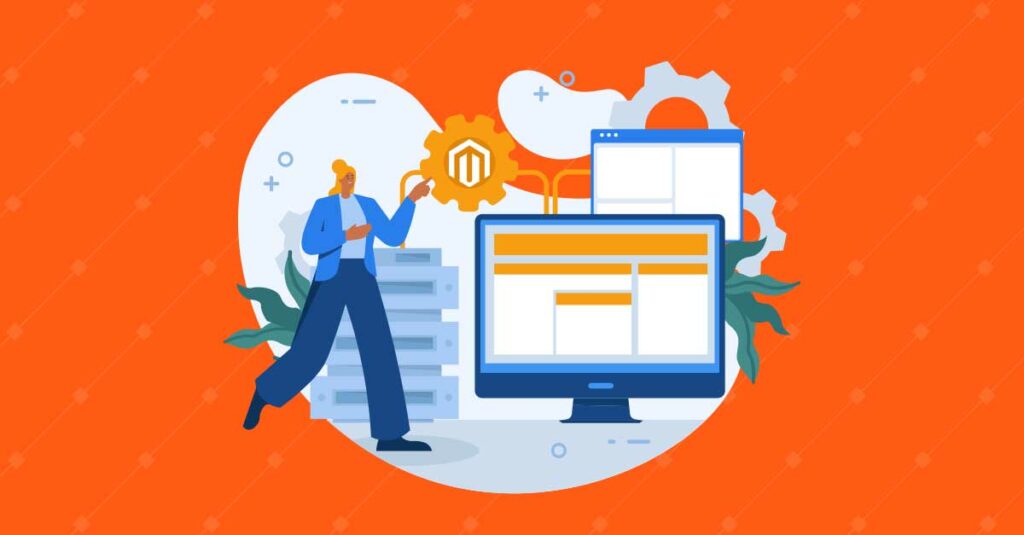Headless or Decoupled? What These eCommerce Terms Mean, And Why They Matter
In many ways, Headless Commerce and Decoupled Commerce are two sides of the same coin. They both focus on using business logic rather than getting bogged down in complex bespoke designs. But the paths these two take to reach this point differ greatly. Developers need to understand this difference to implement their next eCommerce project.
Decoupled Commerce – An Introduction
Decoupled commerce is a model that separates the front end and the back end of the eCommerce site. It is a way to build an eCommerce website without depending on a particular platform or CMS. With this model, you can quickly develop an online store through different technologies, such as HTML5, CSS3, and JavaScript.
Why Decoupled Commerce?
As said before, decoupled commerce is a way of designing eCommerce sites that separates the front-end and back-end functionality. The site’s front end contains content users can see, while the back end contains the products and services the eCommerce brand can manage.
Because decoupled commerce separates these two functions, it allows businesses to use different technologies for each, making it easier to integrate third-party services into the website without having to worry about compatibility issues.
Benefits of Decoupled Commerce
The benefits of adopting decoupling eCommerce for your online store are numerous:
- You can get started faster.
- You don’t need to worry about hosting or maintaining your site (which is especially important if you’re just starting out).
- You can focus on what you do best—selling products!
Headless Commerce – An Introduction
The headless commerce model allows for a full range of digital experiences to be built on top of the existing retail infrastructure. In addition, by incorporating features like augmented reality, artificial intelligence, and virtual reality, headless commerce platforms can create a new level of engagement between customers and businesses.
Headless commerce removes the need to have a connection between the front end and back end of an eCommerce website, allowing the front end to make changes without affecting the back end.
With headless commerce, companies can easily create their own personalized shopping experience while still retaining control over the technology behind it. This means that brands can focus on their brand identity and vision instead of worrying about the complexities of building and maintaining an online presence.
Why Headless Commerce?
Headless commerce has been heralded as the future of online shopping. Putting the company’s uniqueness on display is a great way to let the customers know what makes you different from your competition.
It’s the best way to engage with your customers more meaningfully and give them an experience they’ll remember and share with their network. In short, headless commerce is all about making your brand stand out.
Benefits of Headless Commerce
The benefits of headless commerce for your website are numerous:
- Gain a competitive edge by offering a seamless, personalized experience across all channels.
- Stay ahead of the curve by embracing new trends in eCommerce and digital technology.
- Simplify your business processes by eliminating data silos and the need for multiple systems.
What Are the Similarities Between Headless and Decoupled Commerce?
Headless and decoupled commerce are similar, in that both are about breaking down the barrier between your eCommerce website and the rest of your business.
Instead of having all of your data locked into a single interface, headless as well as decoupled commerce allow you to take your data and put it anywhere you want. You can use any technology or platform you want to build your eCommerce website—and then use that same technology to build other parts of your business (like marketing automation, customer service tools, etc.).
What Are the Differences Between Headless and Decoupled Commerce?
Headless commerce is the ideal option if you’re looking for a complete commerce solution. It delivers everything you require for selling online, including components such as product catalogs, shopping carts, and payment processing. You wouldn’t have to look for these features and functionalities elsewhere or integrate them yourself as they’re built into the platform. In addition, customizing your page would not affect the way the rest of the website works.
On the other hand, decoupled commerce is a way for developers to build eCommerce sites without worrying about the technical elements involved in making them work—like hosting the site or handling payments. So, if you already have an existing eCommerce site or want the ability to quickly create one without spending time building features pertaining to security, payment processing, etc., using a decoupled architecture is the right way to proceed.
Headless Commerce as the Way Forward
Headless commerce is the right choice for businesses if they want to:
- Improve customer experience by moving away from page-based and page-load-based architectures,
- Reduce the time it takes to manage the eCommerce platform, and
- Drive more sales by optimizing the user experience.
Conclusion
Headless commerce and decoupled commerce both deliver flexible solutions for commerce experiences, and each is better suited for certain projects.
Headless offers many benefits and will likely remain the go-to option for eCommerce development even in the future. However, those clinging to traditional systems may lose market share as headless advantages become obvious and merchants adopt systems built around this model. This belief underpins our decision to focus on headless commerce for new projects and major initiatives ahead.
So, what are you waiting for? Go Headless with Ignitiv.








